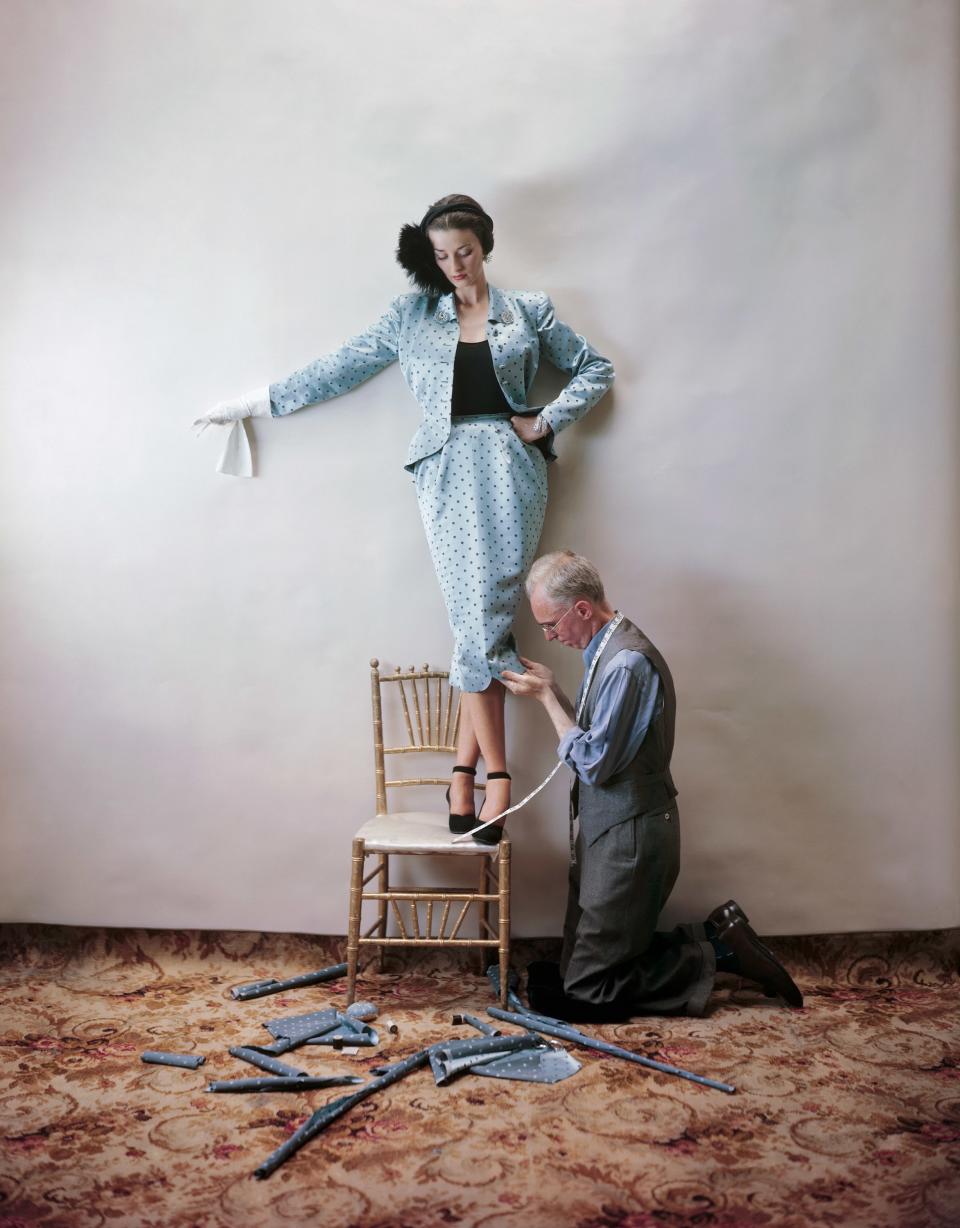I Visited New York’s Most Genius Tailor to Fix a Common Vintage Clothing Nightmare
One day while idly scrolling through social media, I saw that the Instagram account Pechuga Vintage had posted an image of a pair of Gucci pants. These weren’t just any Gucci pants. They were from Spring 1997, one of the most retroactively Instagrammable Tom Ford–era Gucci collections. The pants came with embedded exposed leather thong straps that ever so slightly crept up the hip bone. The buckles were in the shape of rectangular Gs filled with rhinestones, glinting like tiny sizzling disco balls. And they were in my size. I had to have them!
By the time I had messaged the owner, I was frothing at the mouth. As luck would have it, I scored the pants. I beat out over 25,000 hardcore, equally rabid Pechuga followers for this piece of Gucci history. The pants arrived at my office one crisp spring afternoon, along with a personal note from founder Johnny Valencia. They were silky smooth but structured. The thong straps were mint. No wear or tear in sight. I went to the bathroom to try them on. One pant leg in. Ah, sweet success! And then suddenly the pants stopped, with a screeching halt, if you will. My perfect pants couldn’t fit over my butt.
The feeling of not fitting into these pants felt something like publicly getting rejected by a crush at a middle school dance. Or maybe sneezing while kissing someone for the first time. I felt like I was experiencing firsthand the urban legend that clothes back in the day were made markedly smaller, back when Victorian women had waists like Polly Pocket dolls. But this was the late ’90s! The human body can’t change that much evolutionarily over a 20-year period. Still, the pants were puzzlingly small.

I had no intention of getting rid of these pants. These were going to be my go-to-the-grave look, my very saucy burial attire. Determined, I asked around the office for a solution. I was recommended to speak with Vogue Contributing Editor Lynn Yaeger, who had sworn by a demigod tailor at the famed Alteration Specialists, dedicated to the fine art of tailoring. According to Lynn, I had to speak with Ornela. Lynn explained to me that Ornela Flamuri was the Da Vinci of garments, who could dig into the depths of her wild imagination to fix nearly any piece.
“I once gave them two identical too-small fuzzy pink Zara coats and asked her to make it into one that fit me,” Lynn wrote to me. “Most people would have shown me and my coats the door—but Ornela took it on. She told me there was fluff all over the workroom by the time she finished—but she did it!” Ornela could be the Dr. Quinn, Medicine Woman, for my pants.
I scheduled an appointment with the Alteration Specialists on 62nd and Madison. (There are four locations in New York City.) It’s a big deal there. Sometimes, clients are so high profile that they have body doubles come in to get things altered. While making my appointment, I learned that tailoring my pants would also be a big deal; they’d likely have to be heavily altered and enlarged. Eileen Nunez, the director of operations for Alteration Specialists, explained that clients frequently need garments let out, not just taken in, and tailors typically add a panel to accomplish this. Easy right? Not quite. Panel fabric has to match the original piece itself, a process that becomes more difficult if the fabric is designer or vintage. Sometimes, corsets have to be added into dresses. In other words, these tailors have to get creative.
When I finally arrived to Alteration Specialists, I nervously waited to meet Ornela with my pants clutched in my hands. I imagined her as a wise, ancient Italian woman bent over like a right angle, wearing a necklace of pin cushions like a rosary. Instead, a perky young woman emerged from the backroom. Ornela is from Albania and began training in the art of tailoring at the age of 15, learning from her grandmother at first and later going to school to study it professionally. “I can make something from scratch!” she told me. I’d initially thought these pants would need weeks-long reconstructive surgery. I assumed Ornela would have to go on a fabric pilgrimage before sewing the panel. But she simply took the waistband of the pants and tugged them gently. “They need to be let out,” she told me. “Someone had gotten them taken in.”
Within five minutes, Ornela returned and handed me the pants. They slid up my leg, and I fastened them. Voilá! The pants fit. I went from sulking to red-hot.
Turns out, getting pieces let out that were previously taken in is a relatively common occurrence. Nunez tells me it’s most typically seen in vintage garments; Alteration Specialists usually sees about five such cases a month. It makes sense: Now that much of vintage shopping is increasingly done online and not in person, people are buying things at their own risk by approximate sizes or measurements. More often than not, consumers fail to read closely. In many cases, sizes are listed without mention of possible alterations during a garment’s lifetime.
Coincidently, soon after my pants fiasco, my colleague, Vogue’s Fashion News and Emerging Platforms Editor, had a similar run-in with a too-small vintage piece. Steff Yotka bought a stellar black Givenchy Fall 2015 corset from The RealReal in perfect condition—an item she’d been hunting for. “When it arrived I immediately ripped it out of the packaging and put it on over my clothes to the horror that there were about six inches between the two sides of the zipper on my back,” she told me.
Upon further inspection, Yotka also realized that her corset had been taken in at some point. (She did not go a tailor but rather broke the stitches with a mail opener at her desk. To each their own.) Either way, let it be a lesson that if something doesn’t fit, there are plenty of possibilities in the world of alterations. And remember: Don’t let it go, let it out.

